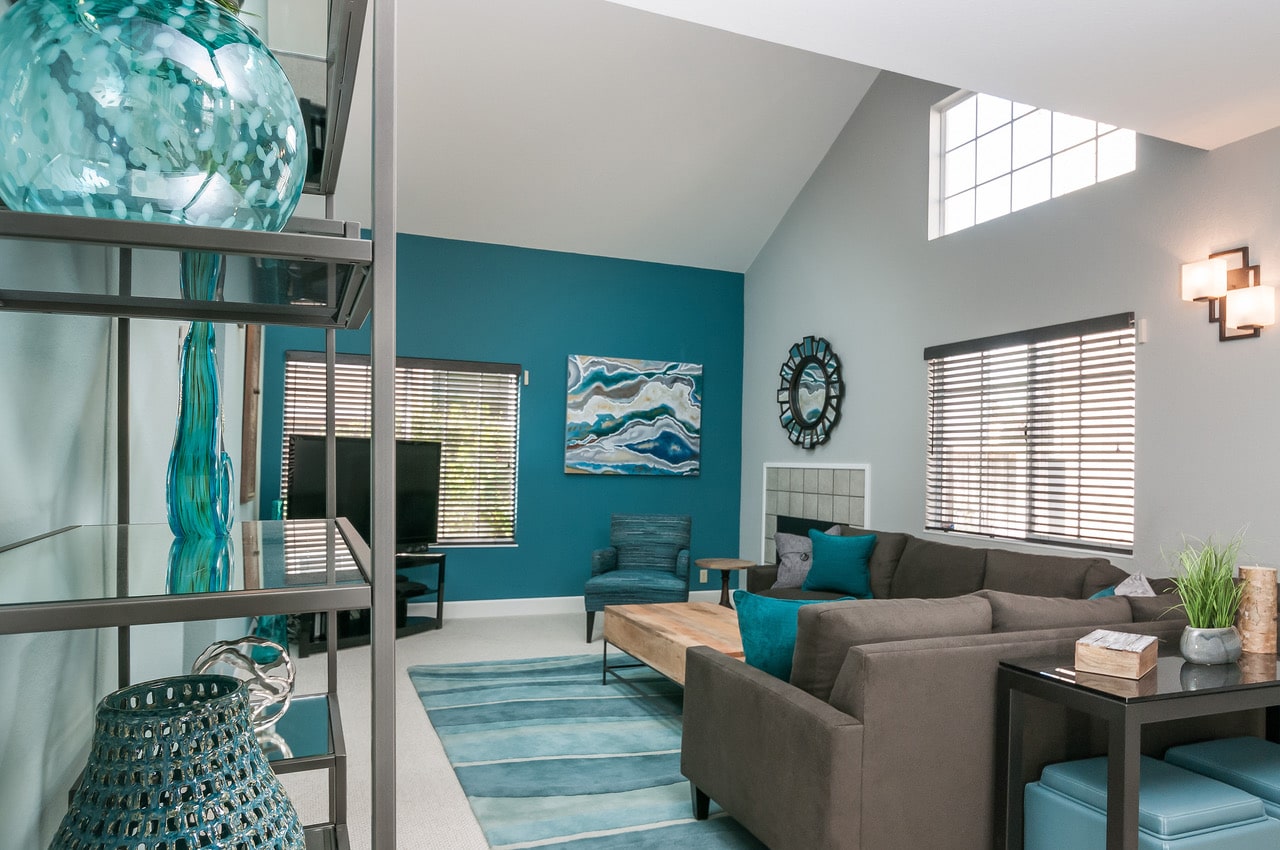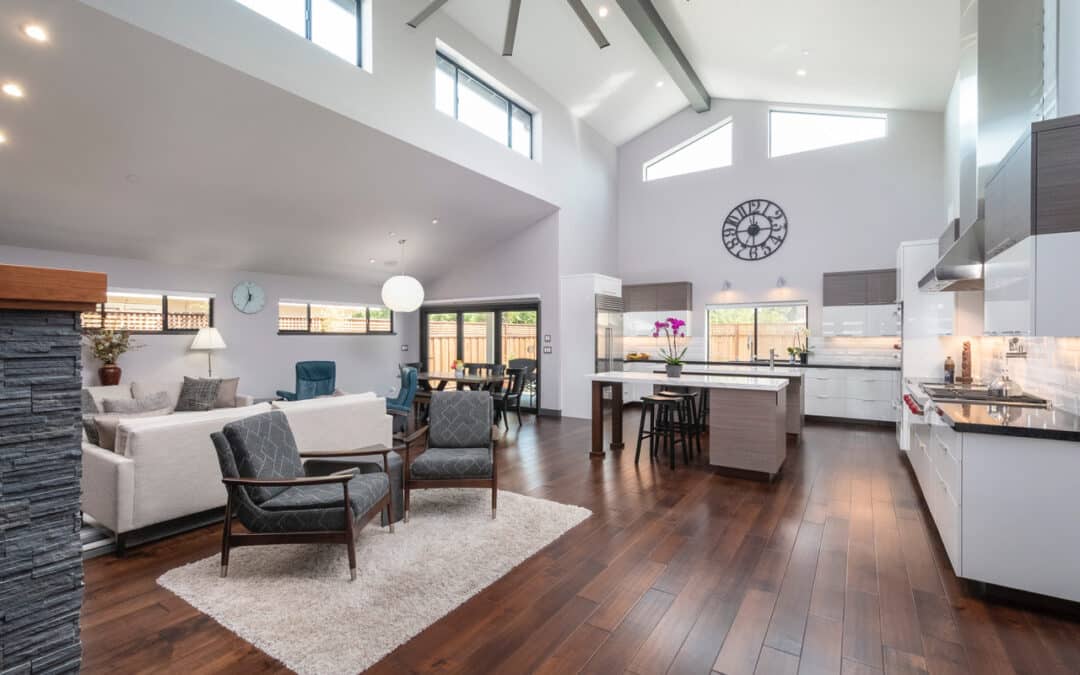If you’re planning a design project, ask yourself the same questions a designer would ask you. When I meet with new clients, I ask lots of questions to get to know their lifestyle, taste and design goals so I can best help them. If you’re on your own, these same questions can help you focus and prioritize what’s most important to you and help you get started.
- What do you love about this room? Which elements are staying and need to be incorporated into the new design? Sometimes the answer is “nothing!” But there is always something! Perhaps you like the large windows, or the wood flooring, or a piece of artwork you bought on vacation. If it’s the view and the windows you like most, design a seating arrangement and a window treatment that will enhance them. If it’s a piece of artwork, pull colors from it to design your color scheme. If you have to keep something because it’s too expensive to replace right now (like not-so-attractive fireplace tile, for example), then design the room so it’s NOT the focal point. Add other elements to bring the eye to other areas in the room.
- What do you dislike about the room? What would you like to change? Design is about aesthetics, but it is also very much about improving functionality. The most common complaints I hear are: This room is too dark; the room lacks storage; I can’t figure out how to arrange the furniture as the room is too small/large/long/narrow. Fortunately all of those problems can be solved. Room too dark? Guess what– add lighting! Recessed lights, track lights, a chandelier, pendant lights and wall sconces are all possible options. For space planning, draw the space to scale and use furniture templates to experiment with different arrangements. Not enough storage? Consider built-in cabinetry, or tall bookcases, or storage ottomans.
- How is this room used? A dining room may indeed be for dining, but it also may need to serve as a homework spot; a living room may also serve as a home office; a guest room may need to accommodate both grandkids and hobbies. List all of the activities that need to take place so you can design accordingly. A Murphy bed with a built-in worktable might be a great solution for your guest room. And a buffet in your dining room may be better suited for storing school supplies instead of those seldom-used “good dishes.”
- What colors do you love? Don’t worry about what’s popular—if you find yourself still loving colors from previous decades, have no fear. Any color can be made to look new again if it’s paired with more current colors. Pore over magazine photos, Pinterest and Houzz.com to view a wide variety of beautiful color schemes. More important than being “current” however, is being happy. So choose colors you love.
- What is the overall look and feel you’d like to see? I recently worked on a project where our design theme was “Modern Urban Rustic.” This kept us focused when selecting furnishings and materials. For example, we used rustic, reclaimed wood for the floors, combined with modern, funky light fixtures.
- Are there special needs to consider? For example, if there are elderly parents or people with disabilities, you should stay away from area rugs, which can pose a tripping hazard. With small children, you may want to look at furniture with rounded edges or leather pieces that are easy to wipe clean. Satin finish paint is also a good option for rooms where kids and pets hang out.
- Do you want to complete this project all at once, or over time in phases? If you know your end goal, it’s OK to tackle a project in phases. However, don’t let the project take so long that you start changing your mind about your design goals, or find yourself never finishing. Sometimes this happens on a decorating project—we get the furniture purchased and walls painted, but then the clients don’t follow through with the window treatments and accessories. The result is a room that is not quite done, which can leave everyone unsatisfied. If possible, save enough money to do the whole project at once.
- What is your budget for this project? Is it realistic? I find that clients sometimes have no idea how much things actually cost. So while they have a budget amount in their head, it often does not match the reality of what they want. Remember to add on sales tax, shipping and charges for delivery, installation, and furniture assembly. Plus labor for painting, crown molding, electrical work, etc. Unfortunately things always seem to be more expensive than people think, especially in the Bay Area.
- How long are you planning to stay in your house? This can definitely affect your design plan. If you are planning on selling soon, then meeting with a realtor would be helpful to get an idea of the best ways to allocate your design budget. If this is your long-term house, then by all means, design it for your own taste and lifestyle.





